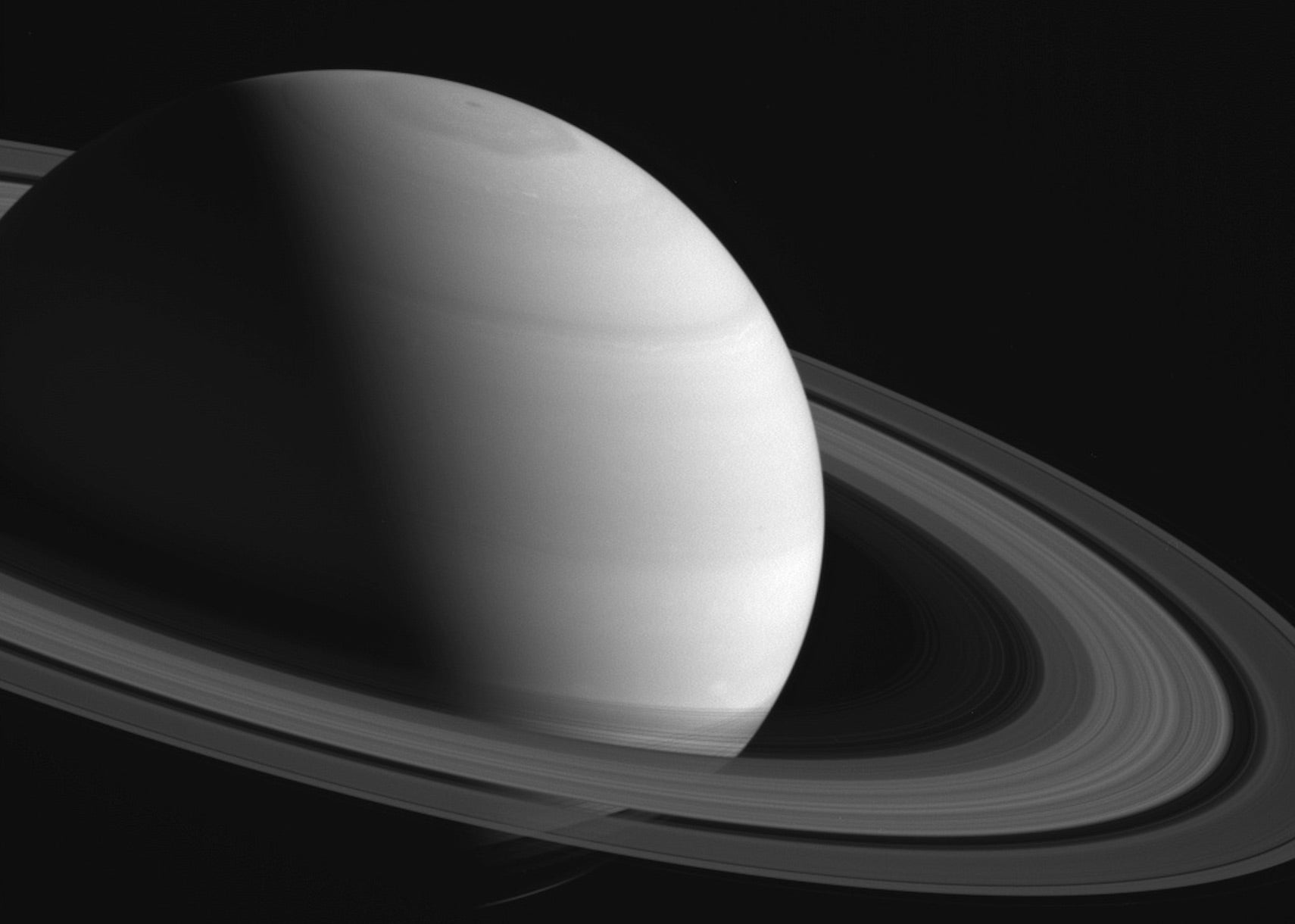
In 2017, the Cassini spacecraft, which had spent nearly two decades working in orbit around Saturn, ended its mission in a “Grand Finale.” But before the spacecraft went out in a blaze of glory by plunging into the planet’s atmosphere, it recorded subtle gravitational changes, which astronomers have now used to build a map of the interior of the solar system’s second gas giant.
Orbits are a tricky business. It’s not just a matter of sticking a spacecraft in orbit and letting it go. Any slight changes to the gravitational pull on a spacecraft can affect its trajectory. And those slight changes can come from influences far away in space, and influences deep within the planet.
The distribution of matter within a planet will change anything orbiting around it. For example, a satellite flying above Mount Everest will experience a slightly different gravitational pull from Earth than one flying over the middle of the Pacific.
By carefully recording these changes in a satellite’s flight path, astronomers can reconstruct what a planet is made of and where its mass is.
In the case of the Cassini spacecraft, astronomers used data from the orbiter’s Grand Finale, a series of orbits that brought it spiraling to its doom in Saturn’s atmosphere. Despite decades of research, that planet’s interior remains largely a mystery, since we typically only have access to observations of the surface, which represent the uppermost reaches of the planet’s atmosphere.
But Cassini’s Grand Finale gave us a major clue as to what’s going on inside that planet. The astronomers behind the study examined tiny variations in the frequency of signals emitted by the spacecraft’s communications antenna. Those variations were due to Doppler shifts as Cassini orbited Saturn, and were directly tied to the detailed gravitational environment under the spacecraft during its orbits.

Ripples in Gravity
To amplify their data, the scientists also used studies of the innermost rings of Saturn. Curves and spirals appear naturally in those rings, which are again sensitive to the interior workings of the planet. By combining and comparing the Cassini data with the ring data, the researchers were able to build a confident portrait.
One of their discoveries is the fact that the interior of Saturn is just as vicious as the surface. The upper reaches of Saturn’s atmosphere experience differential rotation, which means that the winds near the equator blow much faster than the winds at the poles. The gravitational data from Cassini tells us that this kind of rotation extends down to a depth of about 6,200 miles (10,000 kilometers), indicating that Saturn’s atmosphere is deep, complex, and highly energized. Indeed, the winds on Saturn seem to extend to greater depths than the winds of its larger sibling, Jupiter.

The researchers were able to able to build a hazy map of the core of Saturn. That core is massive, composed mainly of heavy elements, weighing somewhere between 12 and 20 times the mass of Earth. But the core is not tight and compact like a rocky planet’s. Instead, it’s fuzzy, going from pure heavy elements in the deepest center of the core and gradually transitioning to a mixture of heavy elements and the lightweight hydrogen and helium that make up the bulk of the planet’s atmosphere. The transition region between fuzzy core and true atmosphere occurs somewhere around one-half of the planet’s radius.
While the planet doesn’t have a true solid “surface” – there is no rocky ground for an intrepid astronaut to planet their feet on – the researchers were able to find a deep rotation rate for Saturn. The motion of gas in the outermost layers of the atmosphere is dominated by winds, not rotation, and so the researchers were able to use the Cassini data to estimate a deep rotation rate of around 10 and a half hours. That’s as close as you can get to a measure for the length of a “day” on a gas giant planet.
Combining the gravitational data with models of Saturn’s interior also allowed the researchers to study the flow of heat within the planet. Heat flow is critically important to the dynamics of a planet, as it governs how energy is distributed between the layers of atmosphere and the ability of a planet to generate a magnetic field.
In Saturn’s case, heat-flow models constructed with a fuzzy core and highly energetic atmosphere suggest that the planet can experience helium rain. When this happens, helium in the upper atmosphere cools and condenses, just like water vapor does on Earth, and then falls deep into the interior. There it reaches a critical layer where the temperatures and pressures are too high, and the helium rain evaporated back into a gas. That gas then rises back up into the upper atmosphere, completing the cycle.
Helium rain may play a significant role in the evolution of Saturn, allowing for the efficient flow of heat from the interior to the surface layers, but this process is not fully understood. Unfortunately, this is all the data we will ever get from Cassini, and we will have to patiently wait for another mission to the ringed giant before we can learn more.









